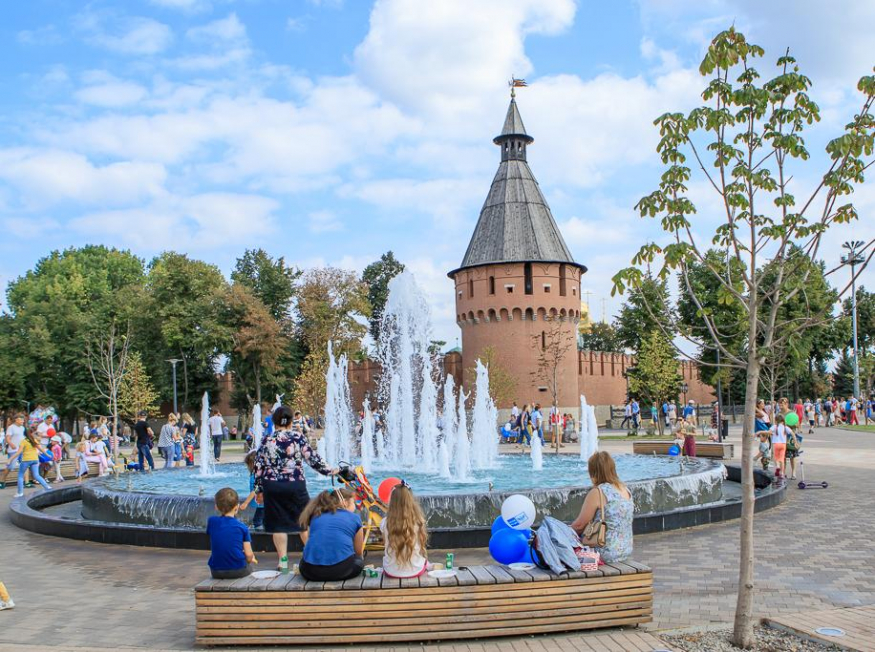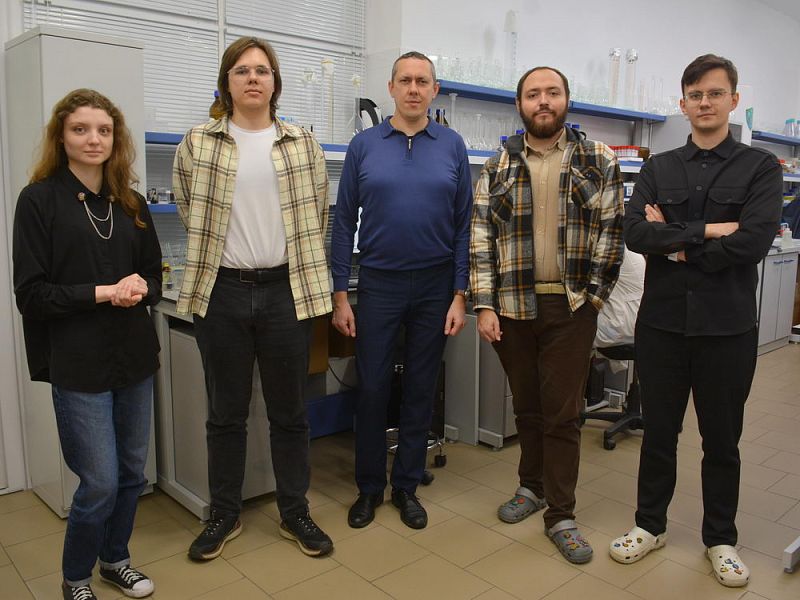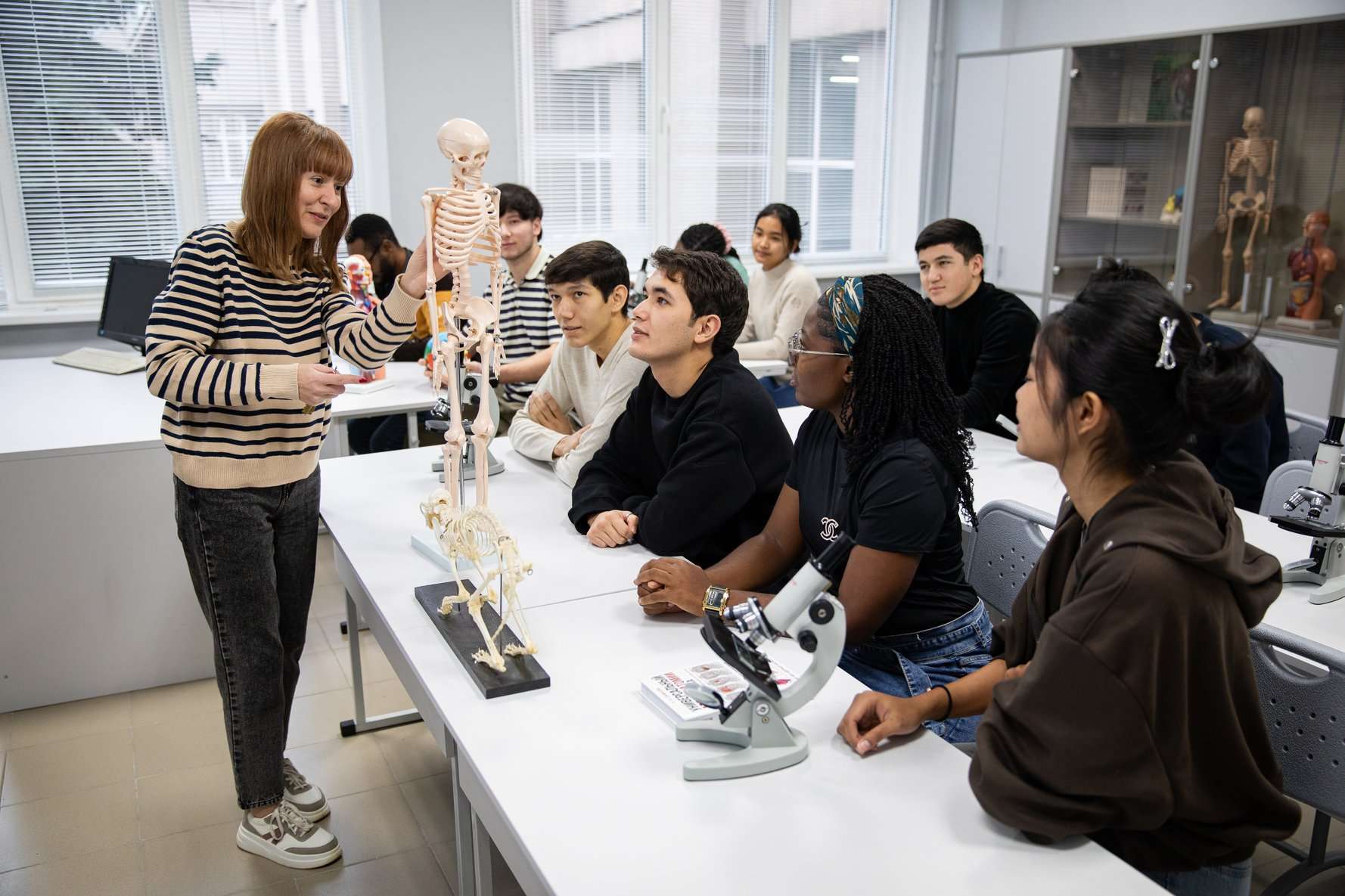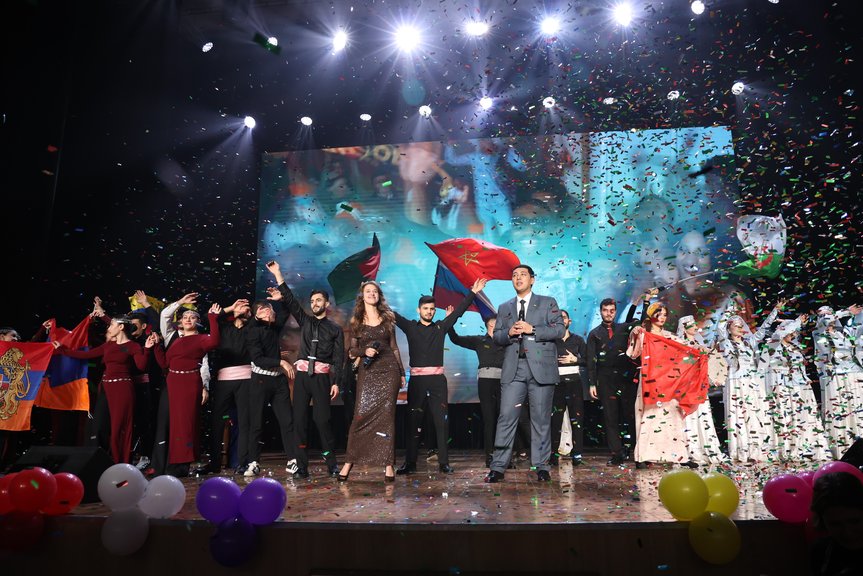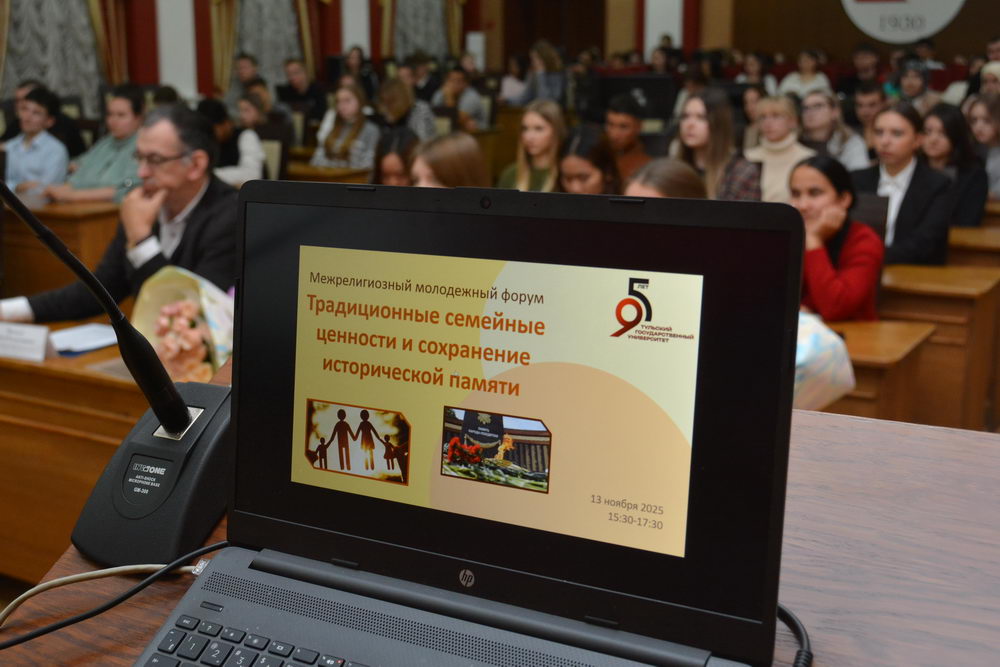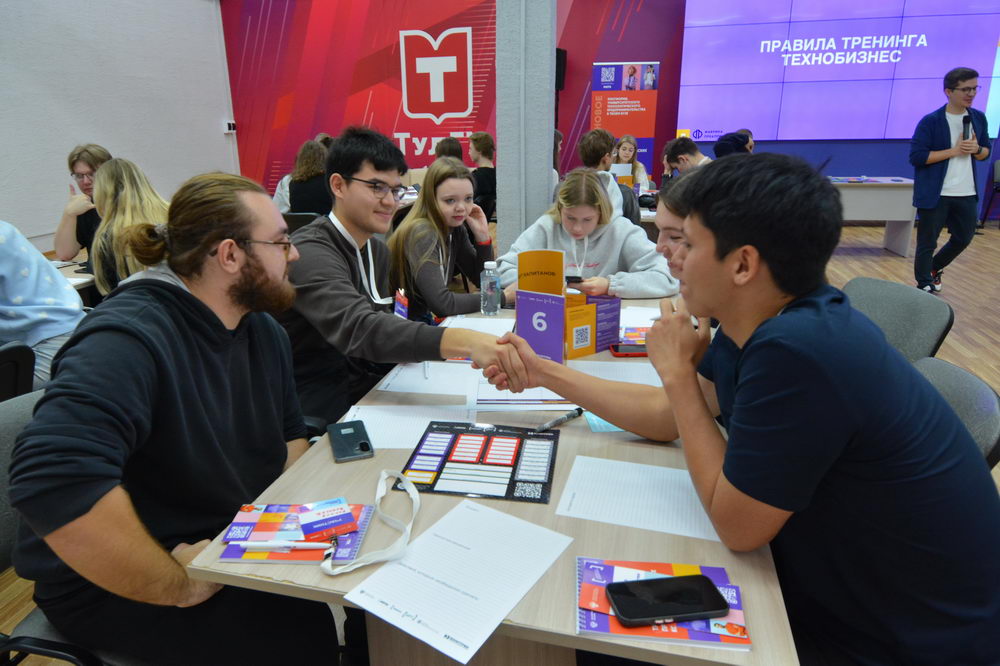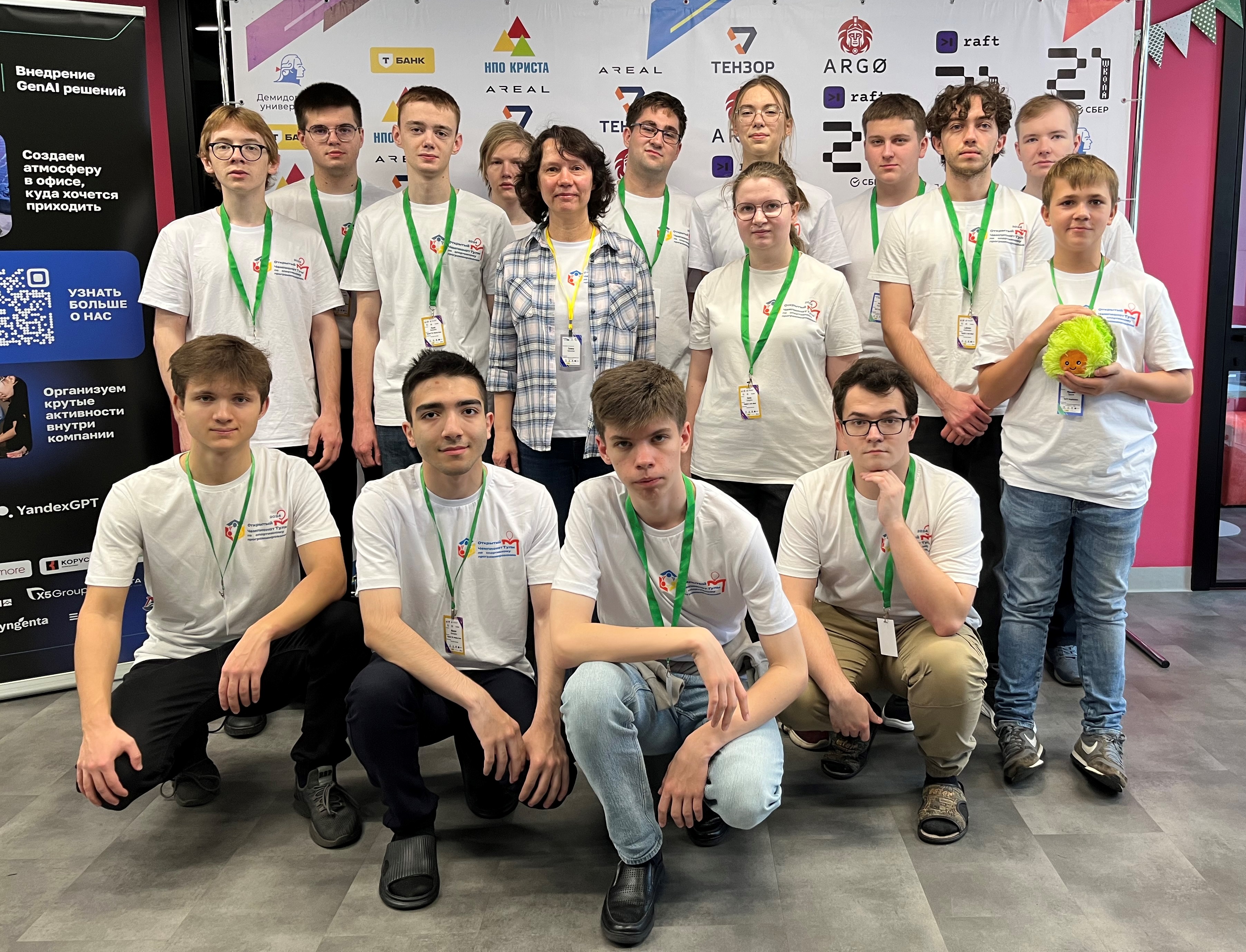- 23.08.2025 09:06
Hospitable Tula
The editorial board of “Molodoy Kommunar” has prepared an article about how foreigners see our Tula. Correspondent Inessa Granatkina talked to students studying at TulSU, who came to us from different countries.
Yasnaya Polyana, Filimonovskaya toy, Belevskaya pastila and Tula gingerbread are familiar even to those who have never been to our region, and the list of local brands is not limited to this. Therefore, it is not surprising that almost two million tourists visited the Tula region last year. This year, the number of people wishing to see our city of craftsmen is expected to grow. The correspondent of “Molodoy Kommunar” found out how foreigners see the armour capital, why they choose Tula and how our region can surprise tourists.
City of contrasts
Our city has great tourist potential! Usually, each region is famous for something specific. Tula, however, surprisingly combines several areas: here you can find defense, samovar, accordion, and gingerbread production. On its streets one can find examples of wooden architecture coexisting with houses from the USSR and modern high-rise buildings, and in this interweaving of eras and crafts, the true spirit of Tula is born, — tour guide Alexandra Lipkan is convinced. — Therefore, I think the interest in studying our multifaceted city will never decrease.
People mainly come from Moscow, Kaluga, Ryazan, Voronezh and Lipetsk to see the city where armour have been forged for centuries. The guide advises starting your acquaintance with the origins — with the Tula Kremlin. In addition, right next to the Museum Quarter, where guests of our region can immediately get acquainted with the technique of preparing the famous delicacy that has become the calling card of our region, drink tea from the Tula samovar, learn everything about the course of the Battle of Kulikovo and take a photo with the accordion of grandfather Filimon. According to Alexandra, such a route maximally covers the main historical milestones of our region. However, tourists still have clarifying questions.
— During excursions, guests of our region often ask: who was the Tula prince, in what years did he rule? We tell them that Tula was not a princedom, but a fortress-city for the protection of the southern outskirts of our state. Many are also surprised by the historical fact that Tula has never surrendered to an external enemy, — our interlocutor emphasizes, not without pride. — Well, of course, some travelers have a natural desire to get to know our region better. As practice shows, foreigners are especially attracted by the Yasnaya Polyana Museum-Estate and the Polenovo Museum-Reserve, and everyone is always amazed by our Central Park, which invariably evokes genuine delight and admiration in all guests.
Frost and sun
A whirlwind of bright emotions among "visa" visitors to our region is caused not only by historical twists and turns, but also by geographical and meteorological features. So, what can Tula impress foreigners with from the very first steps? The weather! — three students studying the specialty "General Medicine" at TulSU answer the question almost in chorus.
- In my homeland, Cambodia, there are only two seasons, there is no winter at all. There the minimum temperature is +25 degrees, and the maximum is +40, it often rains, and here you can see all the seasons in all their glory. It's simply amazing! — exclaims second-year student Tri Kimsorng, who dreams to become a surgeon. — Although, of course, it took a long time to get used to the Russian cold, at first it was uncomfortable, especially in the first year, but at least I managed to master skating! In winter, I really like skating at the Gubernskiy skating rink in the center of Tula. Especially before the holidays. In Russia, the New Year is celebrated so brightly! I like it.
Yasnaya Polyana, Filimonovskaya toy, Belevskaya pastila and Tula gingerbread are familiar even to those who have never been to our region, and the list of local brands is not limited to this. Therefore, it is not surprising that almost two million tourists visited the Tula region last year. This year, the number of people wishing to see our city of craftsmen is expected to grow. The correspondent of “Molodoy Kommunar” found out how foreigners see the armour capital, why they choose Tula and how our region can surprise tourists.
City of contrasts
Our city has great tourist potential! Usually, each region is famous for something specific. Tula, however, surprisingly combines several areas: here you can find defense, samovar, accordion, and gingerbread production. On its streets one can find examples of wooden architecture coexisting with houses from the USSR and modern high-rise buildings, and in this interweaving of eras and crafts, the true spirit of Tula is born, — tour guide Alexandra Lipkan is convinced. — Therefore, I think the interest in studying our multifaceted city will never decrease.
People mainly come from Moscow, Kaluga, Ryazan, Voronezh and Lipetsk to see the city where armour have been forged for centuries. The guide advises starting your acquaintance with the origins — with the Tula Kremlin. In addition, right next to the Museum Quarter, where guests of our region can immediately get acquainted with the technique of preparing the famous delicacy that has become the calling card of our region, drink tea from the Tula samovar, learn everything about the course of the Battle of Kulikovo and take a photo with the accordion of grandfather Filimon. According to Alexandra, such a route maximally covers the main historical milestones of our region. However, tourists still have clarifying questions.
— During excursions, guests of our region often ask: who was the Tula prince, in what years did he rule? We tell them that Tula was not a princedom, but a fortress-city for the protection of the southern outskirts of our state. Many are also surprised by the historical fact that Tula has never surrendered to an external enemy, — our interlocutor emphasizes, not without pride. — Well, of course, some travelers have a natural desire to get to know our region better. As practice shows, foreigners are especially attracted by the Yasnaya Polyana Museum-Estate and the Polenovo Museum-Reserve, and everyone is always amazed by our Central Park, which invariably evokes genuine delight and admiration in all guests.
Frost and sun
A whirlwind of bright emotions among "visa" visitors to our region is caused not only by historical twists and turns, but also by geographical and meteorological features. So, what can Tula impress foreigners with from the very first steps? The weather! — three students studying the specialty "General Medicine" at TulSU answer the question almost in chorus.
- In my homeland, Cambodia, there are only two seasons, there is no winter at all. There the minimum temperature is +25 degrees, and the maximum is +40, it often rains, and here you can see all the seasons in all their glory. It's simply amazing! — exclaims second-year student Tri Kimsorng, who dreams to become a surgeon. — Although, of course, it took a long time to get used to the Russian cold, at first it was uncomfortable, especially in the first year, but at least I managed to master skating! In winter, I really like skating at the Gubernskiy skating rink in the center of Tula. Especially before the holidays. In Russia, the New Year is celebrated so brightly! I like it.
Our climate did not leave the young man from Sudan indifferent either. Maan Haider recalls that when he first saw snowfall, he rushed to capture it on camera.
- I sent the video to my relatives in Sudan so that they could also see this weather phenomenon. I often talk to my family via video link, share my impressions with them, tell them about my academic successes and, of course, about Russian nature, - the future doctor smiles. - My groupmates from university and I went to a sanatorium-preventorium near Aleksin - to the village Bunyrevo. It is very beautiful there. That's why I even remembered the name. It's a pity that there is little time left to see the local sights, since my studies take up a lot of energy. I am only in my second year, at the beginning of my journey. I haven`t yet made a final decision about a subspecialty, but at the given moment I am very interested in cardiology.
If Maan decided to connect his life with medicine because he was inspired by his brother's example, then Darweish Mohamed decided on his choice of profession because of the desire to help his loved ones.
- Many of my relatives have vision problems, and I decided to become an ophthalmologist. Friends advised me to go to study in Tula. They said that there are very good teachers here, interesting subjects, a lot of practice. That's how I ended up here from Egypt. I was right, — the third-year student admits. — We were greeted very well, hospitably. You know, before coming to Russia I was an uncommunicative person, but here we not only got to know each other, but also became friends. We are all from different countries, but we found so much in common in Tula
Not just strudel
- I like it here. Although, of course, I miss my homeland, including the national cuisine. The thing is that it is difficult to find some products for preparing specific items here. Therefore, we most often cook using the local menu. Of the Russian dishes, I personally like pelmeni, — Darweish shares.
Here Maan joins the conversation. He shows a photo of strudel on his phone, complaining that he forgot the name of this “sweet bread” that he liked so much. The future cardiologist became acquainted with this invention of German chefs with jam from local apple varieties in Tula, and the girl from Cambodia fell in love with Maslenitsa, or rather, not so much the holiday itself, but its gastronomic component - pancakes and fritters. The student also learned the tricks of making shchi and garnishes from buckwheat.
At parting, I ask my interlocutors to name the adjectives with which they associate Tula.
- Calm, beautiful, traditional, — my new acquaintances list the epithets. Although, as we found out, it is also delicious.
By the way, Deputy Minister of Culture of the Tula Region Elena Martynova reported that the region plans to develop gastronomic tourism. She spoke about this at a recent operational meeting.
— We came up with a gastronomic game with restaurateurs. Many are familiar with adventure games. The principle will be the same, only in this case the stations can be restaurants. We hope that in autumn we will be able to try this game in action.
You must admit, it is a good idea. In addition, in the near future it is planned to open several branches of federal museums, put new hotels into operation and beautify the N. Gramolina Park. The plans are large-scale, but necessary. After all, the picturesque nature, unique attractions, various museums and traditional sweets for tea not only help to attract tourists to our region, but also, what is no less important, help to create a strong, boundless friendship. In every sense of the word.
Author: Inessa Granatkina


